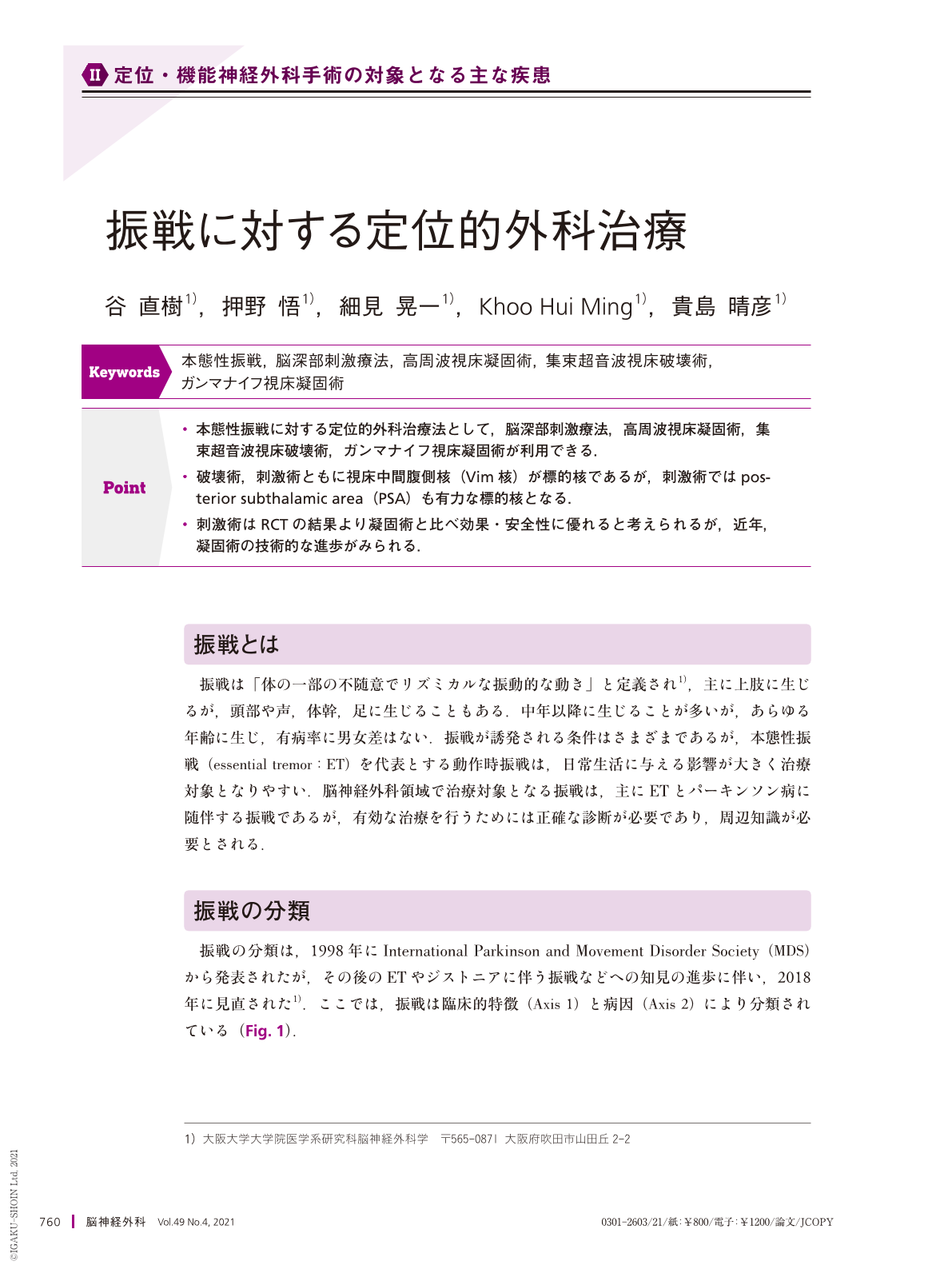1 0 0 0 振戦に対する定位的外科治療
1 0 0 0 OA 在宅型反復経頭蓋磁気刺激治療のための磁場ナビゲーションシステムの開発
- 著者
- 福島 大志 西川 敦 宮崎 文夫 関野 正樹 安室 喜弘 松崎 大河 細見 晃一 齋藤 洋一
- 出版者
- 公益社団法人 日本生体医工学会
- 雑誌
- 生体医工学 (ISSN:1347443X)
- 巻号頁・発行日
- vol.49, no.1, pp.122-131, 2011-02-10 (Released:2011-12-13)
- 参考文献数
- 16
Repetitive Transcranial Magnetic Stimulation (rTMS) is effective for intractable diseases of the nervous system. As the effects of rTMS last only several hours, rTMS therapies need to be continued daily. Under present circumstances, it is difficult to use rTMS in patients' home, because only experienced physicians in limited hospitals can use the expensive and complicated rTMS system. Therefore, we developed a magnetic navigation system for home use of rTMS. The proposed system uses inexpensive and small magnetic sensors; hence it is suitable for home use. By using the proposed method, even people who have no medical knowledge and technique can easily navigate the coil to the optimal position preliminarily specified by expert physicians. Our system needs to collect some dataset which consists of magnetic field and the corresponding position of the coil at the patients' initial visit. Since it is bothersome to collect a large number of dataset, we reduced the dataset by approximation using multi-regression analysis.
- 著者
- 福島 大志 西川 敦 宮崎 文夫 関野 正樹 安室 喜弘 松崎 大河 細見 晃一 齋藤 洋一
- 出版者
- Japanese Society for Medical and Biological Engineering
- 雑誌
- 生体医工学 (ISSN:1347443X)
- 巻号頁・発行日
- vol.49, no.1, pp.122-131, 2011
Repetitive Transcranial Magnetic Stimulation (rTMS) is effective for intractable diseases of the nervous system. As the effects of rTMS last only several hours, rTMS therapies need to be continued daily. Under present circumstances, it is difficult to use rTMS in patients' home, because only experienced physicians in limited hospitals can use the expensive and complicated rTMS system. Therefore, we developed a magnetic navigation system for home use of rTMS. The proposed system uses inexpensive and small magnetic sensors; hence it is suitable for home use. By using the proposed method, even people who have no medical knowledge and technique can easily navigate the coil to the optimal position preliminarily specified by expert physicians. Our system needs to collect some dataset which consists of magnetic field and the corresponding position of the coil at the patients' initial visit. Since it is bothersome to collect a large number of dataset, we reduced the dataset by approximation using multi-regression analysis.
